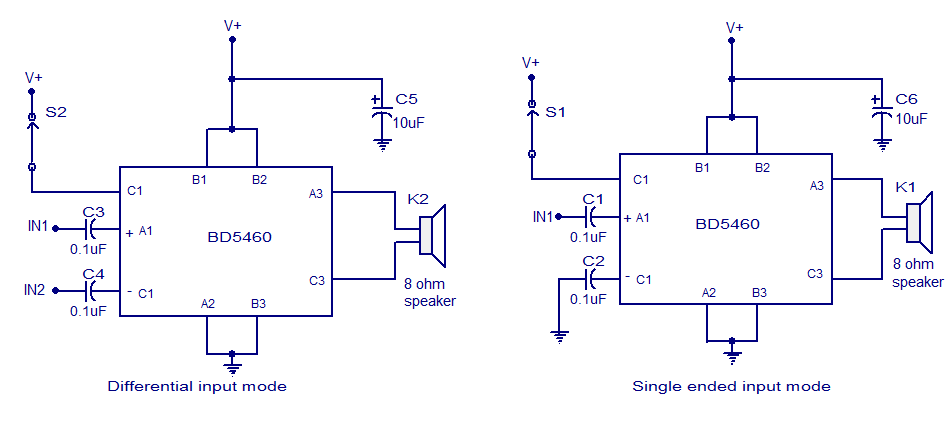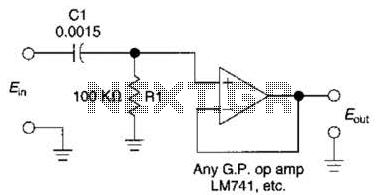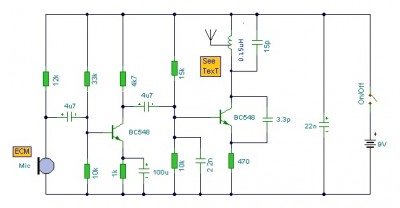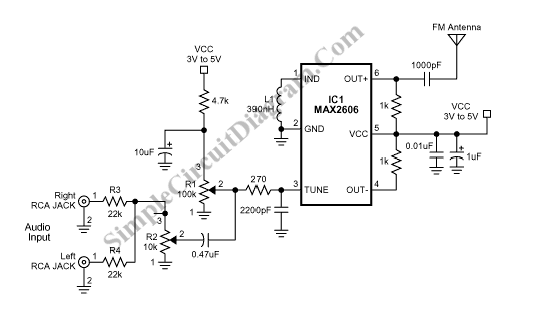
Class E AM Transmitter for 1710 kHz
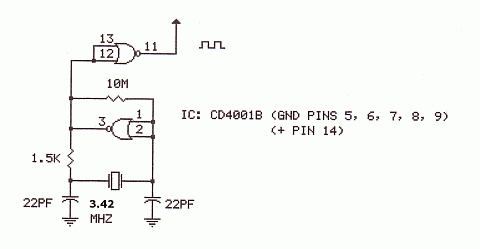
A 200-watt class-E AM transmitter designed for non-sanctioned broadcasting at a frequency of 1710 kHz. The schematic includes a negative peak limiter, an over-modulation indicator, a linear scale directional wattmeter, as well as power supply and antenna circuits.
The 200-watt class-E AM transmitter operates at a frequency of 1710 kHz, which is in the medium wave AM broadcast band. Class-E amplifiers are known for their high efficiency, typically exceeding 80%, which makes them suitable for applications requiring significant power output with minimal heat generation. In this design, the transmitter utilizes a negative peak limiter to prevent distortion during high modulation peaks, ensuring audio quality remains intact while transmitting.
The over-modulation indicator serves as a critical feature, alerting the operator when the modulation level exceeds acceptable limits. This is essential for maintaining compliance with broadcasting standards and preventing interference with adjacent channels. The linear scale directional wattmeter included in the schematic allows for accurate measurement of the transmitter's output power, facilitating adjustments to ensure optimal performance.
Power supply circuits are integral to the operation of the transmitter, providing the necessary voltage and current to the amplifier stages. The design may incorporate voltage regulation and filtering components to ensure stable operation under varying load conditions. Additionally, the antenna circuits facilitate efficient radiation of the transmitted signal, which is crucial for effective broadcasting.
Overall, this transmitter design combines advanced features to achieve reliable and high-quality AM broadcasting, while also addressing the need for monitoring and compliance with broadcasting regulations.A 200-watt class-E AM transmitter used for non-sanctioned broadcasting on 1710 kHz. Negative peak limiter, over-modulation indicator, linear scale directional wattmeter, power supply and antenna circuits (schematic diagram) are also shown.. 🔗 External reference
The 200-watt class-E AM transmitter operates at a frequency of 1710 kHz, which is in the medium wave AM broadcast band. Class-E amplifiers are known for their high efficiency, typically exceeding 80%, which makes them suitable for applications requiring significant power output with minimal heat generation. In this design, the transmitter utilizes a negative peak limiter to prevent distortion during high modulation peaks, ensuring audio quality remains intact while transmitting.
The over-modulation indicator serves as a critical feature, alerting the operator when the modulation level exceeds acceptable limits. This is essential for maintaining compliance with broadcasting standards and preventing interference with adjacent channels. The linear scale directional wattmeter included in the schematic allows for accurate measurement of the transmitter's output power, facilitating adjustments to ensure optimal performance.
Power supply circuits are integral to the operation of the transmitter, providing the necessary voltage and current to the amplifier stages. The design may incorporate voltage regulation and filtering components to ensure stable operation under varying load conditions. Additionally, the antenna circuits facilitate efficient radiation of the transmitted signal, which is crucial for effective broadcasting.
Overall, this transmitter design combines advanced features to achieve reliable and high-quality AM broadcasting, while also addressing the need for monitoring and compliance with broadcasting regulations.A 200-watt class-E AM transmitter used for non-sanctioned broadcasting on 1710 kHz. Negative peak limiter, over-modulation indicator, linear scale directional wattmeter, power supply and antenna circuits (schematic diagram) are also shown.. 🔗 External reference
